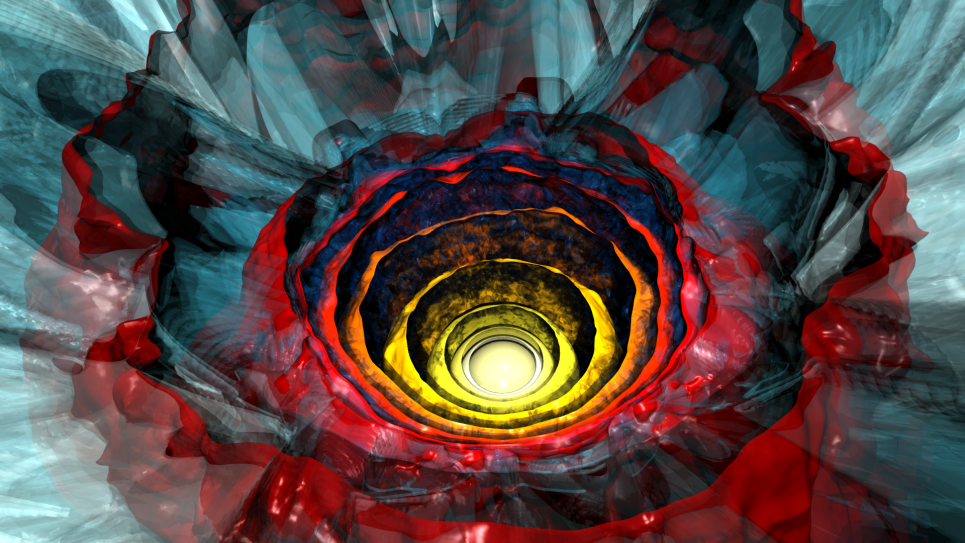
Radiation hydrodynamic simulations. Credit: Lars Bildsten, Kavli Institute for Theoretical Physics
This work aims to advance our understanding of the physical mechanisms that drive the large mass loss rate for Wolf-Rayet (WR) stars—stars that are hotter and typically have a higher Eddington ratio than the massive stars studied in previous INCITE allocations.
This work aims to advance our understanding of the physical mechanisms that drive the large mass loss rate for Wolf-Rayet (WR) stars—stars that are hotter and typically have a higher Eddington ratio than the massive stars studied in previous INCITE allocations.
Previous studies carried out 3D global radiation hydrodynamic simulations with initial envelope structures covering a wide range of parameter space for massive stars, and quantified the effects of enhanced opacity resulting from the turbulent broadening of the lines on the mass loss rate and envelope structures. Researchers also examined the envelope structures of a 20 solar mass star when the luminosity reaches 40% of the Eddington value for electron scattering opacity.
This allocation will be used to study the envelopes of a 40 solar mass star, setting the stage for research into how the star’s mass loss rate and envelope structure depend on rotation.